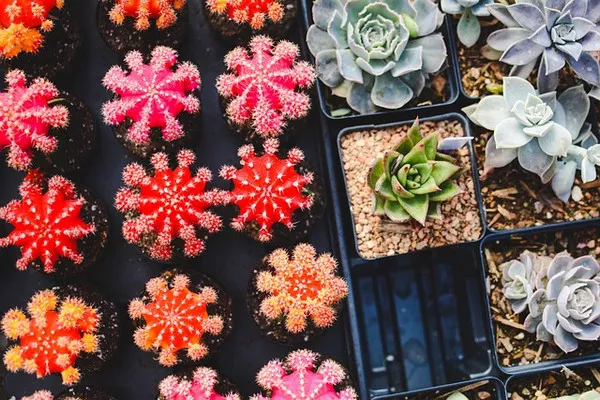Succulents have gained immense popularity among plant enthusiasts due to their captivating shapes, colors, and low maintenance requirements. Propagating succulents from cuttings is a rewarding and cost-effective way to expand your collection or share the joy of these charming plants with friends and family. In this comprehensive guide, we will explore the step-by-step process to successfully grow succulents from cuttings, ensuring healthy and thriving plants.
Choosing the Right Succulent Cuttings
When selecting cuttings for propagation, it is crucial to pick healthy and disease-free parts of the succulent. Look for mature, unblemished stems that are at least 2-3 inches long and have several leaves attached. Avoid cuttings with signs of rot, pests, or damage, as they may have a lower chance of survival.
Allowing Cuttings to Callus
Once you have taken the cuttings, it’s essential to allow them to callus before planting. Callusing helps to protect the cutting from moisture loss and prevents it from rotting during the rooting process. Place the cuttings in a dry, shaded area for 1-3 days until the cut ends form a dry, scab-like layer.
Preparing the Potting Medium
Succulents require well-draining soil to thrive, making a blend of cactus mix, perlite, and coarse sand or pumice ideal for their growth. Mix these components in a 1:1:1 ratio to create a well-aerated, fast-draining potting medium that prevents overwatering and root rot.
Planting the Succulent Cuttings
Once the cuttings have callused, it’s time to plant them. Fill a clean, shallow container with the prepared potting mix and create small holes using your finger or a pencil. Gently insert the cut end of each succulent cutting into the soil, ensuring that at least one-third of the stem is buried. Firmly press the soil around the base of the cutting to provide stability.
Proper Watering Technique
Proper watering is crucial during the rooting process. Initially, water the newly planted cuttings sparingly to avoid overhydration. Mist the soil lightly or use a spray bottle to moisten the soil surface. Gradually increase the watering frequency as the succulent starts to establish roots, usually after a few weeks. Remember, overwatering is a common cause of succulent cuttings failing to root.
Optimal Light Conditions
Succulents thrive in bright light, but direct sunlight can be harsh for freshly planted cuttings. To prevent sunburn, place the cuttings in an area with filtered sunlight or partial shade. A windowsill with bright, indirect light is often ideal. As the cuttings develop roots and show signs of growth, gradually introduce them to more direct sunlight to promote healthy growth.
Temperature and Humidity
Succulent cuttings prefer warm temperatures ranging from 65°F to 80°F (18°C to 27°C) during the rooting phase. Avoid exposing them to extreme temperature fluctuations, as this can hinder root development. In terms of humidity, succulents are adapted to low-humidity environments, so providing good air circulation is sufficient.
Patience and Observation
Growing succulents from cuttings is a process that requires patience. Rooting time can vary depending on the succulent species, environmental conditions, and season. Be observant and regularly check for signs of root development or new growth. It may take several weeks or even months before roots fully form and the cutting transforms into a young plant.
Transplanting the Rooted Succulents
Once the succulent cuttings have developed a healthy root system and several new leaves, they are ready to be transplanted into individual pots. Choose containers with drainage holes and fill them with the same well-draining potting mix used during the propagation stage. Carefully remove the cuttings from the original container, taking care not to damage the delicate roots, and place them in their new pots.
Caring for Established Succulents
As your succulent cuttings mature into established plants, regular care is essential to ensure their continued health and growth. Here are some essential care tips:
Watering: Allow the soil to dry out completely between waterings and avoid waterlogged conditions.
Light: Provide bright, indirect sunlight for most succulent species, but adjust according to each plant’s specific needs.
Fertilizing: Use a balanced, diluted succulent fertilizer during the growing season to support their nutritional needs.
Pruning: Trim off any dead or damaged leaves and use clean, sharp scissors or pruning shears to encourage a neat appearance.
Repotting: As the plants grow, you may need to repot them into larger containers to accommodate their increasing size.
Conclusion
Growing succulents from cuttings can be an incredibly rewarding experience, enabling you to propagate your favorite succulents and share them with others. By following these step-by-step guidelines, you can increase your chances of success and enjoy a beautiful and thriving collection of succulents in no time. Remember to be patient, observant, and mindful of their unique care requirements, and you’ll be well on your way to becoming a successful succulent propagator. Happy propagating!


